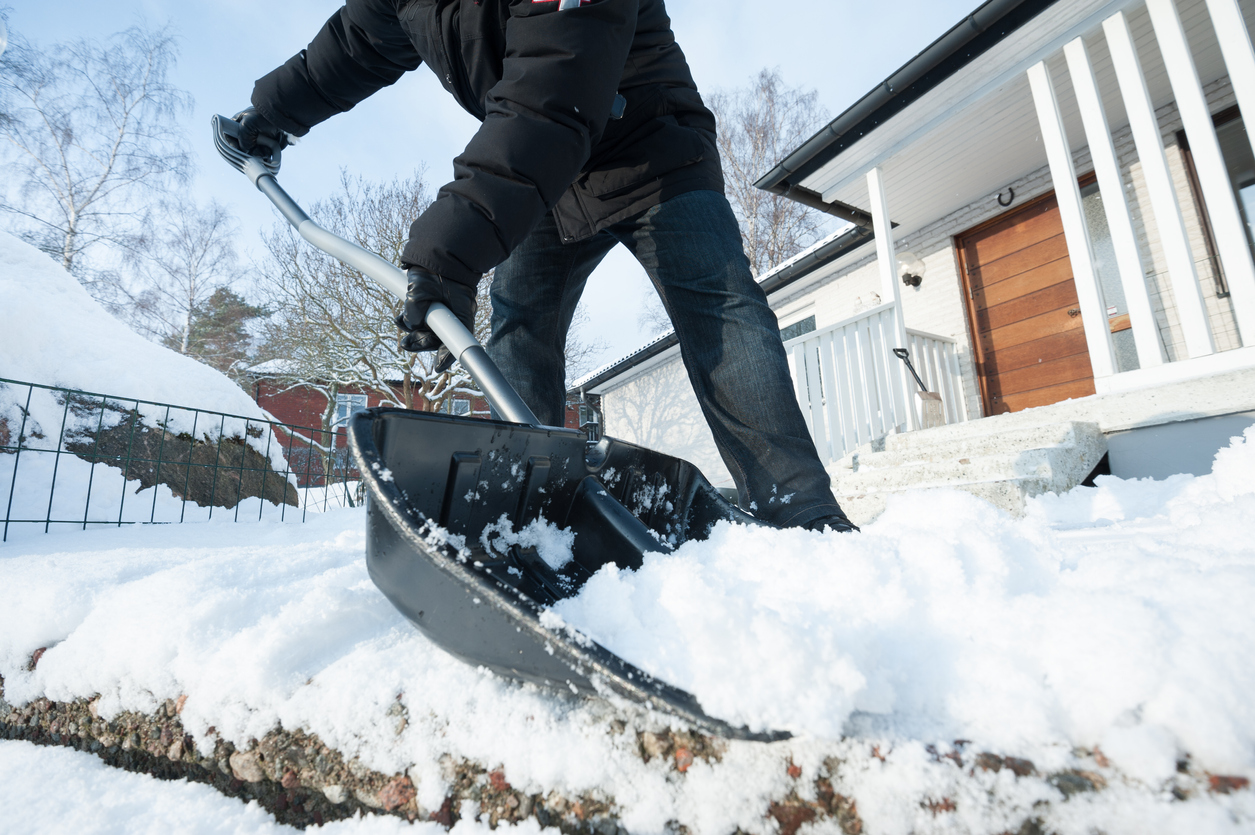Shoveling snow is a strenuous activity. It takes a lot of effort to clear sidewalks, stairs, and driveways, and the effort has a lot of negative effects for certain people. In fact, “each year about 11,500 people in the United States are treated in emergency rooms for injuries related to snow shoveling.”
The combination of physical exertion, cold temperatures, and slippery ice can cause cardiac issues as well as muscle strains and low back injuries. But the repetitive nature of shoveling snow can be performed safely.
How to shovel snow safely
- Warm up. If you’re going to lift heavy amounts of snow and repeatedly bend down, make sure your body is ready. Back extensions are a great way to warm up your back to prevent low back injuries.
- Lift smaller amounts of snow. Remember to bend your knees and lift with your legs rather than your back.
- Take frequent breaks when shoveling snow. Stand up straight, walk around, extend your lower back, and drink plenty of water.
- Use a shovel with a shaft that lets you keep your back straight while lifting. A short shaft will cause you to bend more to lift the snow load. Step in the direction that you’re throwing the snow to prevent your low back from twisting. This helps prevent next-day back fatigue.
- Tighten your stomach muscles as you shovel snow to help keep your spine in a neutral position.
Why shoveling snow can hurt your back
Shoveling snow requires a lot of repetitive activity. You need to bend your back, lift and twist over and over again. On their own, each of these activities could be a problem; when combined, it’s even worse.
Bending forward is a normal occurrence. But we run into problems when we bend forward more than we bend backward. Repetitive bending from shoveling snow stresses the soft tissue in your back beyond its normal resting place.
The discs in our backs are a protective shock absorber between the bones in our spine. When we bend forward repetitively, this puts a constant pressure on our discs and displaces the nucleus of the disc backward. This displacement causes stiffness in the joint. Over time the nucleus may not be centered all the way and instead stays posterior. Once this occurs, it only takes a little bit of pressure or a twist when shoveling snow to throw your back out.
How virtual physical therapy can help
If you experience low back pain due to shoveling snow, a virtual physical therapist can help. Agile Virtual PT has the largest nation-wide network of physical therapists. Agile Virtual PT’s physical therapy professionals are able to diagnose PT conditions, create personal PT care plans, and provide online PT sessions that achieve health goals. Plus, Agile is always there to assist with signup, managing insurance claims and providing technical support. Schedule an appointment today and live without pain!

